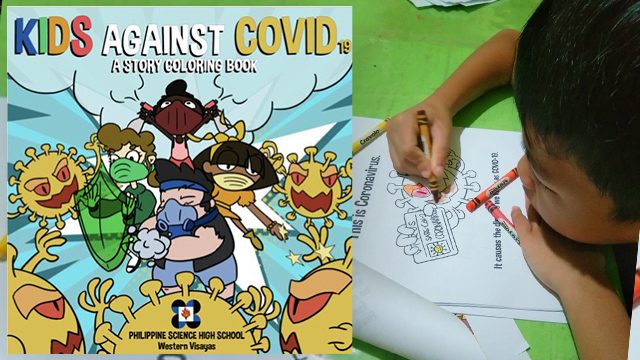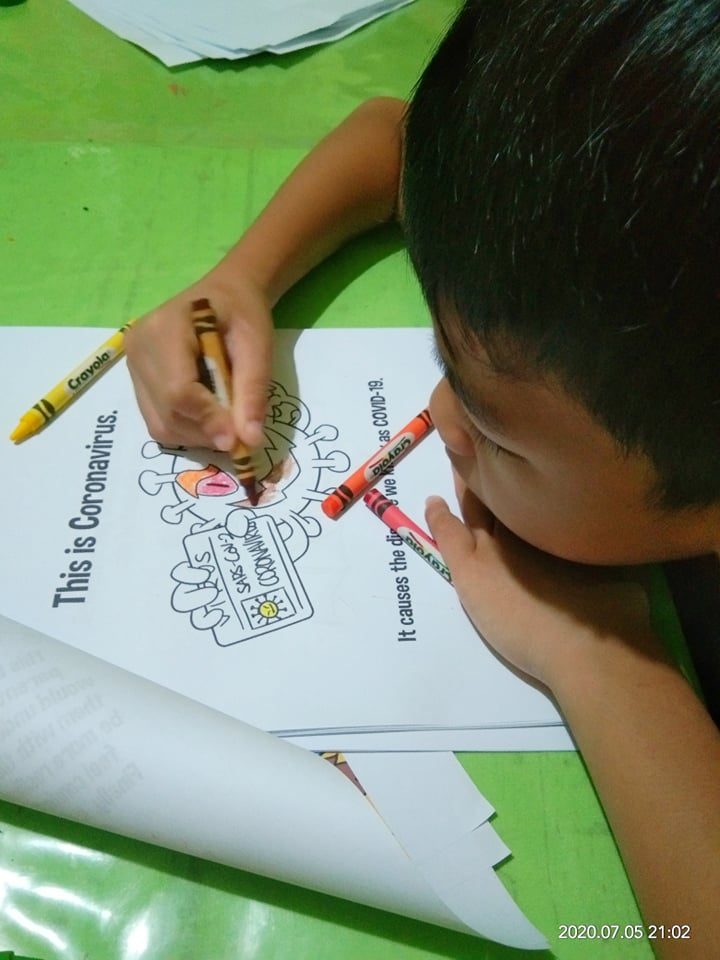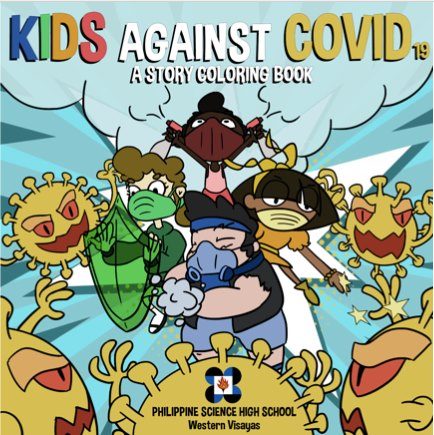SUMMARY
This is AI generated summarization, which may have errors. For context, always refer to the full article.

CAPIZ, Philippines – How do you talk to a 3-year-old about COVID-19?
This was a question that research and physics teacher Dr Aris Larroder sought to answer with Kids Against COVID-19.
Created with his students at the Philippine Science High School – Western Visayas campus (PSHS-WVC), Kids Against COVID-19 is both a storybook and a coloring book for children aged 3 to 7 years old. It aims to educate children about the ongoing COVID-19 pandemic and empower them even at their young age to do their part in protecting themselves from the fast-spreading virus.
Science for the community
The book started with two realizations: that there were no coronavirus-related information materials for children, and that as a science school, PSHS-WVC needed to do something that addressed the COVID pandemic. Larroder wanted to address them both.
As a science educator for 17 years, Larroder has a strong belief that science is meant to be shared with the community.
It’s no surprise that he would think of making a children’s book to educate the youth about science. However, if you ask Larroder himself, he would point out that most of the work was done by his students: some graduating scholars of PSHS-WVC Batch 2020 researched, wrote, and illustrated the book themselves.
“I made an initial outline for them, but the final thoughts – those was all theirs,” said Larroder in a mix of Filipino and English.
The process
Originally, the storybook was proposed as a requirement for Grade 12 students taking up Larroder’s research class at PSHS-WVC, since they couldn’t do other activities given the cancelation of classes due to COVID-19. Many were initially interested, but after it was announced that the school year would be cut short in April, only a few students remained to pursue the project.
Rajo Cadorna, Jenn Sampiano, Luke Socrates, and Seth Tionko – all Grade 12 students at PSHS-WVC – were left to become the main workforce behind the storybook. Despite not being graded for it anymore, these students believe that doing something for their young fellow countrymen is a reward all on its own.
“The best we can do as PSHS scholars is the effective communication of science to the people,” said Tionko, one of the researchers of the storybook.
However, the work was not without its problems and frustrations. Aside from issues with motivation and having to work separate from each other, they quickly realized that communicating science to young children was more difficult than they first thought.

“I wanted to include so much information that it was overwhelming. When I made my first draft, they told me it was too long for a kid’s storybook,” shared Sampiano, who was both a researcher and a writer for the storybook.
Meanwhile, Socrates, who shares the writing credits for the storybook along with Sampiano, routinely read their drafts to his 7-year-old brother, noting when concepts were hard to grasp and when certain words weren’t familiar.
“I rephrased a lot, trying to use as less words as possible. I am used to talking with children, so I used that experience,” he said in a mix of Filipino and English.
Another goal of the storybook is to make something children could identify themselves with and enjoy.
For Cadorna, the sole illustrator, his challenge was in trying to find balance: his illustrations had to be informative, easy to understand, and, most importantly, fun to look at.
“I had to see through a kid’s eyes. If I were a kid, would I like this storybook? Is it impressive? Do I understand everything? I had to capture that childlike wonder and still transmit the messages clearly,” Cardona said.
Empathize with children
In the middle of the book, Kids Against COVID-19 asks its readers a question: “Are you worried about coronavirus?”
While this may seem out of place in a storybook that aims to educate and inform, the book’s creators believe that it’s absolutely essential to help children understand their own feelings about the pandemic and its effect on their lives.
According to Sampiano, the book is also meant to help the children cope.
“It reassures them and makes them feel that their emotions are valid. Whatever they’re going through, they can get through with the help of the people around them,” he added.

Finding safety and comfort are a large part of what the book is about. While the first half of it covers the origins, spread, and symptoms associated with COVID-19, the second half covers what children can do to keep themselves safe and quell their panic. This is also meant to help parents understand the feelings of their children, as it can be difficult trying to talk to young kids about such a complex matter.
Ultimately, the book hopes to bring in children into the conversation of COVID-19.
“It’s more than just a storybook and coloring book,” explained Larroder. “As early as 3 years old, these kids can do something for our cause. This is a message to everyone that this is not the fight of one person, but this is a fight of everyone.”
The last page of the storybook says it best, with this simple yet strong statement: Together, we can fight coronavirus.
Accessible to many
Kids Against COVID-19 is meant to be as inclusive as possible, which is why it is completely free and available in multiple Filipino languages.
The book was released online alongside the new volume of PSHS-WVC’s official research journal on June 26. It’s free for download at Publiscience, the school’s official website for science publications.
It is currently available in English, Filipino, Cebuano, and Hiligaynon. New translations in Aklanon, Bikolano, Itawes, and Waray-waray are to be released on Sunday, July 12. (READ: Cebuano youth seek to help local communities understand COVID-19)
For the Pisay scholars behind the book, the next logical step is making the book accessible to children all over the world. The team has already coordinated with translators for Thai and Japanese, and is currently searching for volunteers for other languages such as Chinese.
While the entire book has been uploaded online for free, Larroder is also accepting donations in order to produce copies and provide coloring materials for communities that have no access to the internet or printers.
For those who wish to help translate, Larroder can be reached at 09458038432 or his email at alarroder@wvc.pshs.edu. – Rappler.com
Dorothy Andrada is a Rappler mover from Roxas City, Capiz. She is a college sophomore at the Ateneo de Manila University.
Add a comment
How does this make you feel?
There are no comments yet. Add your comment to start the conversation.